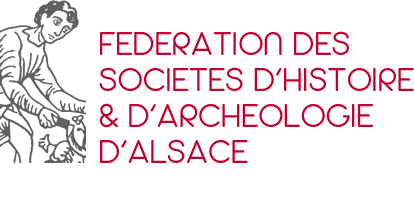Universitaire, chimiste, membre de l’Académie des Sciences (★ Strasbourg 31.1.1948). Fils de Lucien Rohmer, commerçant, et de Mathilde Bur, commerçante. ∞ 2.9.1972 à Orvilliers, Yvelines, Marie-Madeleine Coutière (★ Arras 4.9.1946), directeur de recherches au CNRS; 2 enfants. Études secondaires et classes préparatoires au lycée Kléber de Strasbourg. Ingénieur chimiste de l’École nationale supérieure de chimie de Strasbourg en 1970. Il a soutenu en 1975 une thèse de doctorat d’Etat sur les triterpénoïdes de procaryotes. Assistant en 1974 puis maître-assistant à la faculté de Pharmacie à l’Université Louis Pasteur de Strasbourg en 1979. À son retour de l’Université Stanford en Californie (1978-1979), il a été nommé professeur de chimie organique à l’École nationale
supérieure de Chimie de Mulhouse (1979-1994). Professeur de chimie bioorganique à l’Université Louis Pasteur de Strasbourg, il a fondé, en octobre 1994, le Laboratoire de chimie et biochimie des microorganismes et dirige, depuis janvier 2001, une Unité mixte de recherche du CNRS. Il est un spécialiste de la
chimie et de la biochimie microbiennes, en particulier dans le domaine des isoprénoïdes de microorganismes (bactéries, algues unicellulaires, champignons phytopathogènes, protozoaires). Il a découvert les biohopanoïdes, une famille de triterpénoïdes pentacycliques, équivalents bactériens du cholestérol de nos cellules. Ses travaux sur la biosynthèse de ces hopanoïdes bactériens ont révolutionné la compréhension des premières étapes de la biosynthèse des isoprénoïdes, en mettant en évidence la voie du méthylérythritol phosphate,
une voie de biosynthèse différente de la voie du mévalonate admise depuis plus de 50 ans, largement distribuée chez les bactéries et omniprésente dans les chloroplastes des organismes phototrophes (végétaux, algues). Ses travaux de recherche menés actuellement portent d’une part sur l’approfondissement d’une nouvelle voie de biosynthèse pour déboucher en particulier sur la conception d’agents antibactériens et antiparasitaires d’un type complètement nouveau et, d’autre part, sur l’élucidation des voies de formation des fossiles moléculaires trouvés dans les sédiments à partir des biolipides de microorganismes. Féru de
botanique, émerveillé par le monde végétal, Michel Rohmer nourrit dans son jardin secret une grande passion pour les cactus et les orchidées qu’il cultive avec patience et bonheur. Membre correspondant de l’Académie des sciences le
15 avril 1996, membre de la Deutsche Akademie der Naturforscher Leopoldina en 2000, il a été élu membre de l’Académie des Sciences le 18 novembre 2003. Ses nombreux travaux ont été reconnus par différentes distinctions honorifiques : Prix Vaillant de l’Académie des Sciences (1984), médaille d’Or de la Fondation Wallach, Mulhouse (1993), Prix franco-britannique de la Royal Society et de l’Académie des sciences (1993), Prix Humboldt-Gay-Lussac de la Fondation Alexander von Humboldt, RFA (1997). Chevalier des palmes académiques (1994).
Publications : sur 178 publications produites à ce jour, retenons : M. Rohmer, P. Bouvier et G. Ourisson, Molecular evolution of biomembranes : structural equivalents and phylogenetic precursors of sterols, Proc. Natl. Acad. Sci. USA, t. 76, p. 847-851, 1979; P. Bouvier, Y. Berger, M. Rohmer et G. Ourisson, « Non-specific gammacerane triterpene biosynthesis by a cell-free System from the protozoon Tetrahymena pyriformis. Conformation of squalene, (3S)-squalene epoxide and (3R)-squalene epoxide during the cyclization », Eur. J. Biochem., t. 112, p. 549-556, 1980 ; M. Rohmer, P. Bouvier-Navé et G. Ourisson, « Distribution of hopanoid triterpenes in prokaryotes », J. Gen. Microbiol., t. 130, p. 1137-1150, 1984 ; S. Neunlist, O. Holst et M. Rohmer, « Prokaryotic triterpenoids. The hopanoids of the purple non-sulphur bacterium Rhodomicrobium vannielii ; an aminotriol and its amino-acyl derivatives, N-tryptophanyi and N-ornithinyi aminotriol », Eur. J. Biochem., 147, 561-568, 1985; D. Raederstorff et M. Rohmer, « Sterol biosynthesis via cycioartenoi and other biochemical features related to photosynthetic phyla in the amoebae Naegleria lovaniensis and Naegleria gruberi », Eur. J. Biochem., t. 164, p. 427-434, 1987 ; G. Flesch et M. Rohmer, « Prokaryotic triterpenoids. The biosynthesis of the bacteriohopane skeieton : formation of isoprenic units from two distinct acetate pools and a novel type of carbon/carbon linkage between a triterpene and D-ribose », Eur. J. Biochem., t. 175, p. 405-411, 1988 ; P. Bisseret et M. Rohmer, « Bromine, N-bromo- succinimide and sulphur induced isomerizations in the hopane series », Tetrahedron Lett., t. 31, p. 7445-7448, 1990; M. Rohmer, P. Bisseret et S. Neunlist, « The hopanoids, prokaryotic triterpenoids and precursors of ubiquitous molecular fossils », in “Biological markers in sédiments and petroieums, a tribute to W. Seifert », Prentice Hall, Englewood Cliffs, New Jersey, USA, p. 1-17, 1992 ; M. Rohmer, « The biosynthesis of triterpenoids of the hopane series in Eubacteria : a mine of new enzymatic reactions », Pure Appl. Chem., t. 65, p. 1293-1298, 1993; M. Rohmer, M. Knani, P. Simonin, B. Sutter et H. Sahm, « Isoprenoid biosynthesis in bacteria : a novel pathway for the early steps leading to
isopentenyl diphosphate », J. Biochem., t. 295, p. 517-524, 1993; P. Bisseret et M. Rohmer, « From bio- to geohopanoids : an efficient abiotic passage promoted by oxygen in the presence of cuprous chloride », Tetrahedron Lett., 39, p. 7077-7080, 1995 ; J. Schwender, M. Seemann, H. Lichtenthaler et M. Rohmer, « Biosynthesis of isoprenoids (carotenoids, sterols, prenyl sidechains of chlorophylls and plastoquinone) via a novel pyruvate/glyceraldehyde 3-phosphate non-mevaionate pathway inthe green alga Scenedesmus », J. Biochem., t. 316, p. 73-80, 1996; M. Rohmer, M. Seemann, S. Horbach, S. Bringer-Meyer et H. Sahm, « Glyceraidehyde 3-phosphate and pyruvate as precursors of isoprenic units in an alternative non-mevalonate pathway for terpenoid biosynthesis », J. Am. Chem. Soc., t. 118, p. 2564-2566, 1996; H. K. Lichtenthaler, J. Schwender, A. Disch et M. Rohmer, « Biosynthesis of isoprenoids in higher plant chloroplasts proceeds via a mevalonate independent pathway », FEBS Lett., t. 400, p. 271-274, 1997; T. Duvold, P. Cali, J.-M. Bravo et M. Rohmer, « Incorporation of 2-C-methyl-D-erythritol, a putative isoprenoid intermediate in the mevalonate independent pathway, into ubiquinone and menaquinone of Escherichia coli », Tetrahedron Lett., t. 38, p. 6181-6184, 1997; L. M. Lois, N. Campos, S. Rosa-Putra, K. Danielsen, M. Rohmer et A. Boronat, « Cloning and characterization of a gene from Escherichia coli encoding a novel transketolase-like enzyme that catalyzes the synthesis of D-1-deoxyxylulose 5-phosphate, a common precursor for isoprenoid, thiamin and pyridoxol biosynthesis », Proc. Natl. Acad. Sci. USA, t. 95, p. 2105-2110, 1998; C. Pale-Grosdemange, C. Feil, M. Rohmer et K. Poralla, « Occurrence of cationic intermediates and deficient control during the enzymatic cyclization of squalene into hopanoids », Angew. Chem. Int. Ed., t. 37, p. 2237-2240, 1998 ; M. Rohmer, « The discovery of a mevaionate-independent pathway for isoprenoid biosynthesis in bacteria, algae and higher plants », Nat. Prod. Rep., t 16, p. 565-574, 1999; L. Charon, J.-F. Hoeffler, C. Pale-Grosdemange, L. M. Lois, N. Campos, A. Boronat et M. Rohmer, « Deuterium labeled isotopomers of 2-C-methyl-D-ery-thritol as tools for the elucidation of the 2-C-methyl-D-erythritol 4-phosphate pathway for isoprenoid biosynthesis », J. Biochem., t. 346, p. 737-742, 2000; S. Rosa-Putra, R. Nalin, A.-M. Domenach et M. Rohmer, « Novel hopanoids from Frankia spp. and related soil bacteria : squalene cyclization and significance of geologicai biomarkers revisited », Eur. J. Biochem., t. 268, p. 4300-4306, 2001 ; M. Wolff, M. Seemann, C. Grosdemange-Billiard, D. Tritsch, N. Campos, M. Rodriguez-Concepcion, A. Boronat et M. Rohmer, « Isoprenoid biosynthesis via the méthylérythritol phosphate pathway. (E)-4-hydroxy-3-methylbut- 2-enyl diphosphate : Chemical synthesis and formation from méthylérythritol cyciodiphosphate by a cell-free System from Escherichia coli », Tetrahedron Lett., t. 43, p. 2555-2559, 2002 ; J. F. Hoeffler, A. Hemmerlin, C. Grosdemange-Billiard, T. Bach et M. Rohmer, « Isoprenoid biosynthesis in higher plants and in Escherichia coli: on the branching in the méthylérythritol path- way and the independent biosynthesis of isopentenyi diphosphate and dimethylallyl diphosphate », J. Biochem., t. 366, p. 573-583, 2002 ; M. Seemann, B. Tse Sum Bui, M. Wolff, D. Tritsch, N. Campos, A, Boronat, A. Marquet et M, Rohmer, « Isoprenoid biosynthesis via the methylerythritol phosphate pathway: the (E)-4-hydroxy-3-methylbut-2-enyl diphosphate synthase (GcpE) is a [4Fe-4S] protein, Angew », Chem. Int. Ed., t. 22, 4337-4339, 2002 ; M. Wolff, M. Seemann, B. Tse Sum Bui, Y. Frapart, D. Tritsch, A. Garcia-Estrabot, M. Rodriguez- Concepoion, A. Boronat, A. Marquet et M. Rohmer, « Isoprenoid biosynthesis via the methylerythritol phosphate pathway : the conversion of (E)-4-hydroxy-3-methylbut-2-enyl diphosphate synthase into isopentenyl diphosphate and dimethylallyl diphosphate is cataiyzed by a [4Fe-4S] protein (LytB/IspH) », FEBS Lett., t. 541, p. 115-120, 2003; A. Hemmerlin, J. F. Hoeffler, O. Meyer, D. Tritsch, I. Kagan, C. Grosdemange-Billiard, M. Rohmer et T. J. Bach, « Crosstalk between the cytoplasmic mevalonate and the plastidial methylerythritol phosphate pathway in Tobacco Bright Yellow-2 cells », J. Biol. Chem., t. 278, p. 26666-26676, 2003 ; M. Rohmer, C. Grosdemange-Billiard, M. Seemann et D. Tritsch, « Isoprenoid biosynthesis as a novel target for antibacterial and antiparasitic drugs, Current Opinion in Investigational Drugs, t. 5, p. 154-162, 2004 ; L. Kuntz, D. Tritsch, C. Grosdemange-Billiard, A. Hemmerlin, A. Willem, T. J. Bach et M. Rohmer, « Isoprenoid biosynthesis as a target for antibacteriai and antiparasitic drugs : phosphonohydroxamic acids as inhibitors of deoxyxyiutose phosphate reducto-isomerase », J. Biochem., t. 386, p. 127-135, 2005); M. Seemann, P. Wegner, V. Schünemann, B. Tse Sum Bui, M. Wolff, A. Marquet, A. X. Trautwein et M. Rohmer, « Isoprenoid biosynthesis in chloroplasts via the methylerythritol phosphate pathway : the (E)-4-hydroxy-3-methylbut-2-enyl diphosphate synthase (GcpE) from Arabidopsis thaliana is a [4Fe-4S] protein », J. Biol. Inorg. Chem., t. 10, p. 131-137, 2005 ; M. Seemann, B. Tse Sum Bui, M. Wolff, M. Miginiac-Maslow et M. Rohmer, « Isoprenoid biosynthesis in plant chloroplasts via the MEP pathway : direct thylakoid/ferredoxin-dependent photoreduction of GcpE/IspG », FEBS Lett. t. 580, p. 1547-1552, 2005.
Sources: L’Alsace des 17.3.1993, 13.10.1993 et 3.6.1995; Basler Zeitung du 29.9.1993; Chemische Rundschau, Nr 18 du 6.5.1984 ; Dernières Nouvelles d’Alsace du 22.11.2003 et 7.4.2004 (portrait) ; Extraits des discours et notices biographiques, Académie des sciences, t. VII, 2004, p. 39-41.
Jean-Paul Lingelser (2006)





